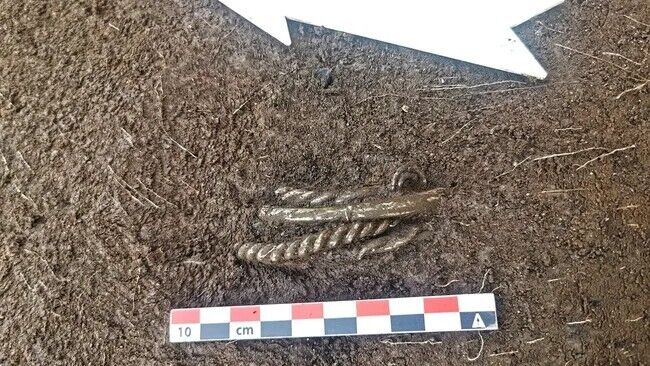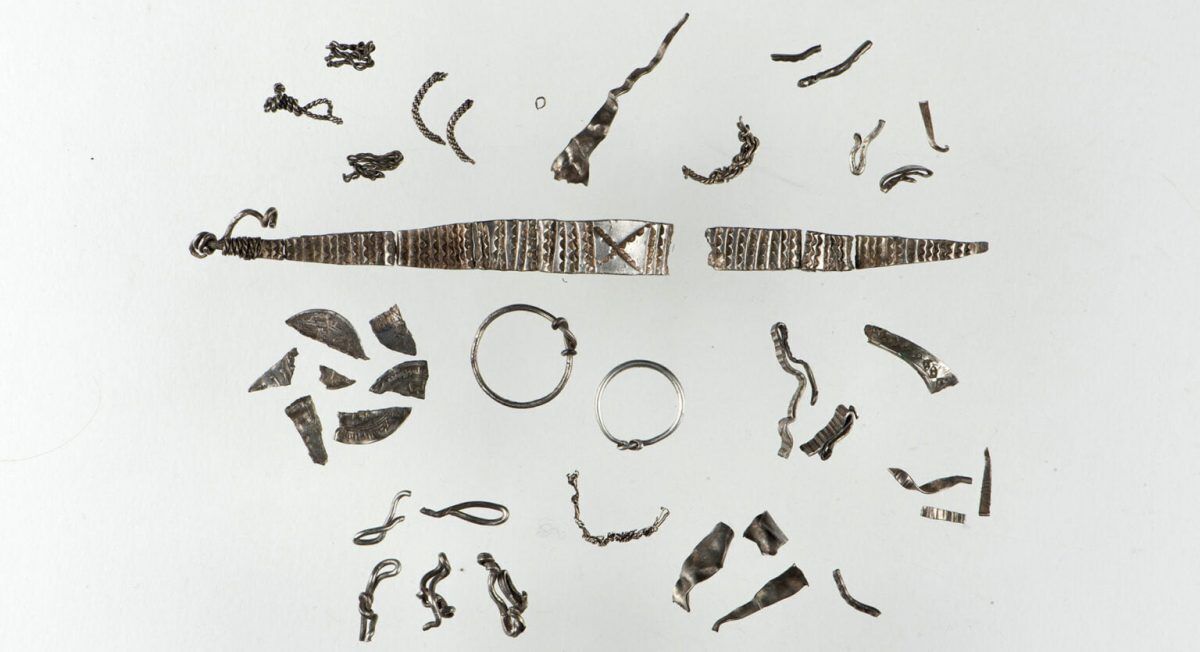Viking Hoard of Silver Bracelets Discovered in Norway

Archaeologists have made a remarkable discovery of four intricately decorated, Viking Age silver bracelets on a mountainside farm in Årdal, a village in southwestern Norway. The bracelets, believed to be untouched for over a thousand years, were found less than eight inches underground. Found during a survey for a new tractor road, the discovery prompted an extensive archaeological excavation that revealed a "large and powerful" Viking Age farm comprising multiple dwellings for both people and animals.
Each bracelet was of different design and in pristine condition, lying so closely they overlapped, indicating their original burial context was undisturbed. This led researchers to believe that the bracelets were hidden deliberately, either during a time of unrest or for safekeeping. Further evidence suggests the farm itself was burned down, possibly during an attack, which coincides with a turbulent period in Viking history.

"This is definitely the biggest thing I have experienced in my career," said Volker Demuth, an archaeologist and project manager at the University of Stavanger. "This is a unique find, because we very rarely find such objects exactly where they were placed. As a rule, such valuable objects are discovered on fields that have been plowed, where an object has been completely taken out of its original context." This untouched discovery offers fresh insights into Viking life and social structures.

The investigation found additional artifacts, including fragments of soapstone pots, rivets, knife blades, and whetstones. The silver bracelets’ connection to other similar artifacts found in Hjelmeland in 1769 suggests these items could have been used either for trade, as ritual sacrifices, or possibly even gifts.
Due to the lack of native silver mines in Norway at the time, the silver used to craft the bracelets was likely imported, supporting theories of Viking trade or looting practices. Geographical and stylistic similarities lend credence to the idea that such jewelry indicates broader socioeconomic relationships in the Viking Age.
To ensure the integrity of the bracelets, they were removed in a block of soil for micro-excavation at the University of Stavanger’s Archaeological Museum. Next steps include soil analysis to determine if organic materials like cloth or a bag were used to wrap the artifacts during their burial.
Upon completion of study and conservation, this significant hoard of Viking bracelets is expected to be displayed at the Archaeological Museum, offering a rare and valuable glimpse into a key epoch in Norway's history.
Earlier, SSP wrote that our pupils change size as we breathe.



















